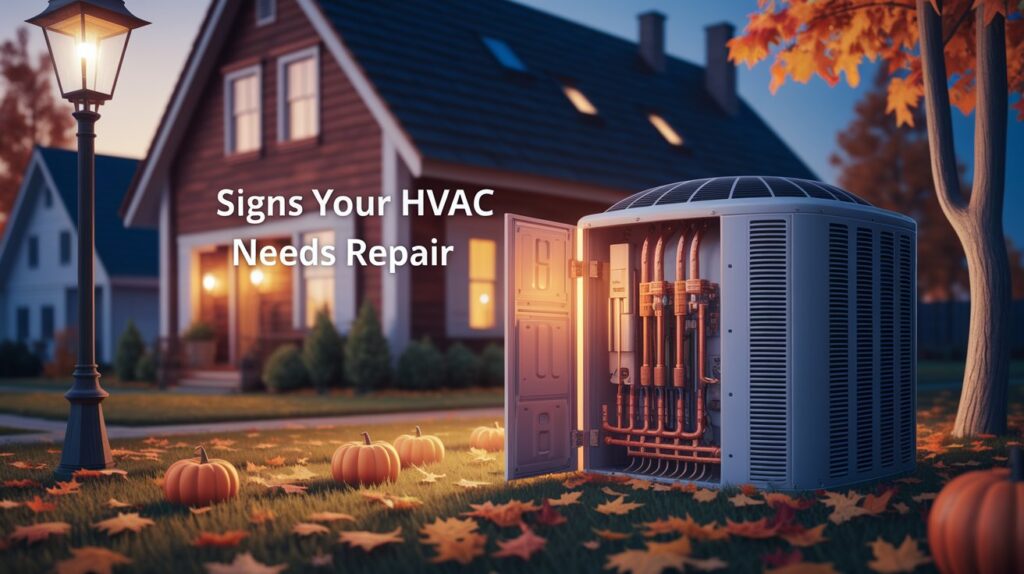As seasons shift and temperatures become more extreme, your HVAC system is crucial in maintaining comfort at home or the workplace. Over time, even the most reliable systems can falter, often showing early signs before a complete breakdown. Ignoring these red flags can lead to increased energy bills, poor air quality, or sudden system failures at the worst times. Understanding the symptoms of a struggling HVAC system is essential, especially before the heat of summer or the chill of winter sets in. We will explore key signs that signal the need for a contractor’s attention to help you avoid costly repairs and maintain a smooth-running climate control system throughout the season.
Clear Signals Your HVAC System Requires Immediate Attention
1. Inconsistent Temperature Control Throughout the Home
One of the first signs that an HVAC system may need service is uneven temperature distribution across different rooms. If one room is significantly warmer or cooler than others, your system could struggle to circulate air efficiently. This issue might stem from blocked ducts, a malfunctioning thermostat, or worn-out components. In some cases, the system may not be sized properly for the space it serves, or insulation in certain areas of the home may be inadequate.
Regardless of the cause, uneven temperatures are not just a comfort issue-they often signal a larger problem within the system that requires evaluation. An HVAC Contractorcan identify whether your ducts need cleaning, if your zoning is misaligned, or if a component like a blower motor is weakening. Delaying attention to this can increase utility costs and put unnecessary strain on the system, shortening its lifespan. Seasonal inspections are often the most effective time to catch this symptom early and prevent more severe outcomes.
2. Strange Noises Coming from the Unit
Your HVAC system should run quietly. If you begin hearing clanking, grinding, hissing, or banging sounds, it’s a warning that parts within the system are either loose, broken, or failing. For instance, grinding could indicate a problem with the motor bearings, while banging might suggest a dislodged part in the blower assembly or ductwork. These noises rarely fix themselves, and ignoring them can cause further damage, leading to more expensive repairs.
Some sounds may be harmless initially but become more pronounced and problematic over time. Seasonal temperature fluctuations can also cause certain components to expand and contract, making existing issues more noticeable. A qualified contractor will be able to pinpoint the noise source, determine the extent of the damage, and offer repair or replacement recommendations. Addressing these sounds early helps restore peace in your home and keeps your HVAC system functioning smoothly and efficiently.
3. Unusual Odors from Vents or the Main Unit
An HVAC system that emits unusual smells needs immediate evaluation. Musty odors can signal mold or mildew within the ducts or evaporator coil, often caused by excess humidity or improper drainage. A burning or metallic smell might indicate wiring problems, overheating components, or accumulated dust burning off inside the furnace. In more serious cases, a sulfur-like smell could indicate a gas leak requiring urgent intervention. Odors are more than a nuisance-they’re a potential health and safety hazard.
Mold spores, in particular, can aggravate allergies or cause respiratory issues, especially for those with preexisting conditions. Regular filter replacement helps, but odors deep within the system require a professional cleaning or component repair. Having a contractor inspect the system when these smells appear can prevent indoor air quality issues and eliminate risks before they evolve into hazardous or costly emergencies.
4. Unexplained Spike in Utility Bills
If your energy bills increase significantly without a corresponding change in usage, your HVAC system may be losing efficiency. Aging systems, dirty filters, refrigerant leaks, or poor insulation can all cause the unit to work harder than necessary. Often, the issue stems from components not operating at full capacity, such as a compressor running constantly to maintain temperature or a thermostat sending incorrect signals. These inefficiencies are rarely obvious to homeowners until the monthly utility bill arrives.
Seasonal transitions are a good time to monitor your energy consumption closely and look for spikes. A contractor can perform a detailed energy assessment to find where performance is slipping. Sometimes, a minor adjustment, such as sealing duct leaks or calibrating the thermostat, can lead to noticeable savings. However, these inefficiencies can accelerate wear and tear, leading to more serious mechanical issues in the future.
As temperatures climb or drop, your HVAC system becomes vital to comfort and safety. Recognizing the early warning signs of trouble is the key to preventing costly repairs, improving energy efficiency, and extending the life of your system. Each symptom points to a potential issue that, if caught early, can be resolved quickly and affordably. Regular seasonal maintenance and prompt response to changes in your system’s behavior will ensure your living environment remains comfortable, safe, and efficient all year.

